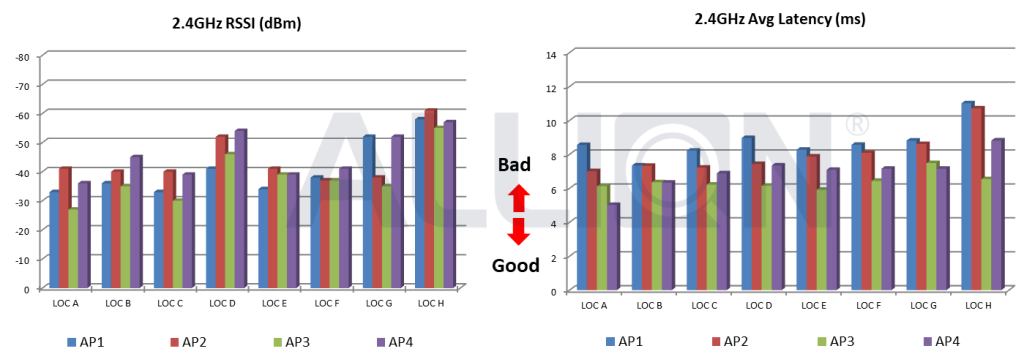Today, consumers widely use wireless routers (Wi-Fi APs) at home, making internet access more convenient. With a plethora of options on the market, consumers often rely on lab-based test reports from websites as a standard for selecting routers. However, besides the impressive figures produced in labs, is there a verification report closer to real-world consumer environments and habits that can serve as a reference for purchasing?
The Truth About Wireless Router Performance
In laboratory testing, wireless router performance is often assessed in an RF isolation chamber, using software to simulate Wi-Fi client scenarios. These tests are conducted in a fully interference-free environment, controlling external factors to show the product’s maximum potential, which is usually what appears on the product packaging. However, the authenticity and reliability of these figures are often questioned by consumers, who frequently report that their purchased AP products do not reach the advertised performance.
Understanding clients’ needs for real-world verification, Allion’s Wireless Consulting Team has built diverse real-world verification environments. This article, through analysis of actual case data, explains the significance of real-world performance verification for wireless routers and the importance of these practical tests!
Allion’s Smart Home Real-World Verification Environment
Environment Details
- Building Material: Concrete
- Floors: 1st and 2nd floors, with a total of 2 levels
- Area: 250 square meters (approximately 75.63 tsubo)
- Verification Locations: 4 test locations on the 1st floor and 4 on the 2nd floor, for a total of 8 test points

1F
*Floor Plans and 8 Verification Locations

2F
Explore more: Smart Home Engineering Testing Services
An Overview of the Four Major Verification Items and Real-World Test Cases
A. Coverage (Heatmap)
When choosing a wireless router, Wi-Fi signal coverage is a highly important consideration. Signal strength is influenced by various factors during transmission, such as distance, wall material penetration, and the number of floors. Heatmaps provide a more comprehensive view by expanding the traditional “point” measurement to an area-based analysis, allowing users to clearly understand the distribution of wireless signals throughout a space. This ensures optimal coverage within active areas. Therefore, conducting Heatmap measurements in actual homes is crucial for assessing wireless router performance.
Real-World Test Case

1F – 2.4GHz

2F – 2.4GHz
*The strength of the wireless signal can be determined by color: red indicates a stronger signal, while blue represents a weaker signal.
Measurement Results
The area around the wireless router on the first floor and directly above it on the second floor shows better signal performance. However, due to increased distance and the presence of various walls, the wireless signal strength in individual rooms decreases to varying degrees.
B. Signal Strength and Latency (RSSI and Latency)
Signal Strength (RSSI): Signal strength indicates the power level of the received Wi-Fi signal. Signal strength diminishes as distance or obstructions increase. It is represented in negative values (dBm), where values closer to zero indicate stronger signal strength.
Latency: Latency refers to the time required for data transmission over the network, measured in positive values (ms). Lower values indicate smoother network performance with fewer obstacles. Generally, a high signal strength is associated with higher transmission performance (throughput), but this is not always the case. For example, high signal strength may still result in lower transmission performance if there is interference or congestion in the same frequency band. Therefore, latency (ms) is also checked during verification.
Real-World Test Case
Four wireless routers with the same specifications (802.11ax) were tested for signal strength and latency in a real-world environment across eight locations.

Measurement Results
- The AP1 (blue) wireless router, while having better signal strength (dBm) than the other three at location E (LOC E), shows higher latency (ms).
- The AP3 (green) wireless router has an average signal strength (RSSI) compared to the other four routers, but it demonstrates the best overall latency (ms) performance.
C. Transmission Performance(Throughput)
As the number of wireless devices in an environment grows, interference between wireless signals can impact connection stability and overall performance. Many consumers often complain about unstable Wi-Fi signals—sometimes it works fine, sometimes it slows down, or disconnects occur during specific times, making it difficult to identify the cause.
Allion has not only built real-world verification environments but also assesses transmission performance (throughput) under varying interference levels. To simulate different consumer and business scenarios, testing is conducted under three conditions: no interference, interference, and interference with congestion.
Additionally, in real-world environments, testing includes various devices, quantities, and actual usage behaviors (e.g., a tablet streaming YouTube, a game console playing online games). In addition to verifying transmission performance, we check for any issues in device behavior (e.g., smooth playback of YouTube videos and audio, lag in online gaming) to provide meaningful, practical results rather than just impressive figures that could mislead consumers.
Real-World Test Case
Four wireless routers with similar specifications were tested in a real-world environment, adding a large number of devices and conducting actual usage to verify transmission performance.

Measurement Results
- The verification results for the AP3 (green) wireless router show that, while it performed excellently in a no-interference environment, it ranked last among the four wireless routers when environmental interference sources and congestion were introduced.
- This illustrates the importance of real-world environment verification in reflecting the true performance of wireless routers
D. Stress Test
It is common to hear about wireless routers experiencing unstable transmission after extended use, or even overheating and crashing due to prolonged operation. To ensure the quality of wireless routers, we designed a stress test to assess whether they can maintain stable performance under prolonged use with a defined data transmission load.

Throughput

Response time
Measurement Results
- The wireless router not only passed the long-duration stress test but also maintained an average transmission performance of 49-50 Mbps, with no significant fluctuations in data transmission, and showed stable response times.
Conclusion
The verification results mentioned above indicate that Allion can provide customized real-world verification services based on customer needs. Through Allion’s smart home real-world environment validation, customers can gain a better understanding of the performance of their AP products in actual usage scenarios. The Allion Wireless Consulting Team offers comprehensive consulting services to help you effectively improve product quality, reduce customer complaints, decrease return rates, and increase repurchase rates.
Explore more: Wireless Performance Consulting (WPC)
Time to Market with Quality! Allion Wireless Performance Verification and Consulting Service
Through Allion’s verification and consulting services, you can obtain testing data guidance more effectively, thereby accelerating product design development and production投入. We can provide you with:
- Test Result Interpretation: In-depth explanations of test results to help you understand each aspect of the test report and answer any questions you may have.
- Bug Discussion: Discussion of issues found during testing, along with solutions or suggested improvements.
- Improvement Recommendations: Suggestions for improvements based on test results to optimize product or system performance, safety, and reliability.
- Technical Support: Technical assistance to resolve issues encountered during testing and guidance on implementing improvement measures.
Through these verification and consulting services, we can provide development recommendations and help formulate more effective development strategies based on test results and industry trends.
Faster
Utilizing our professional testing techniques and experience, Allion can significantly reduce the testing time for application ecosystem verification. Regardless of which development stage your product is in, we can quickly and accurately provide testing services.
Easier
Through AI technology and automated testing solutions, we ensure that every test possesses the characteristics of “reliability, accuracy, and repeatability.” Our services are designed to streamline the testing process, helping you enhance product performance while saving time and resources.
Better
With over 30 years of industry experience and a professional technical team, we have a comprehensive testing environment and equipment. By integrating real-world application scenarios, we ensure that your product can achieve optimal performance in the market.
We are committed to providing high-quality services to assist you in upgrading your product technology to reach top industry standards.

Inquiry Form





































